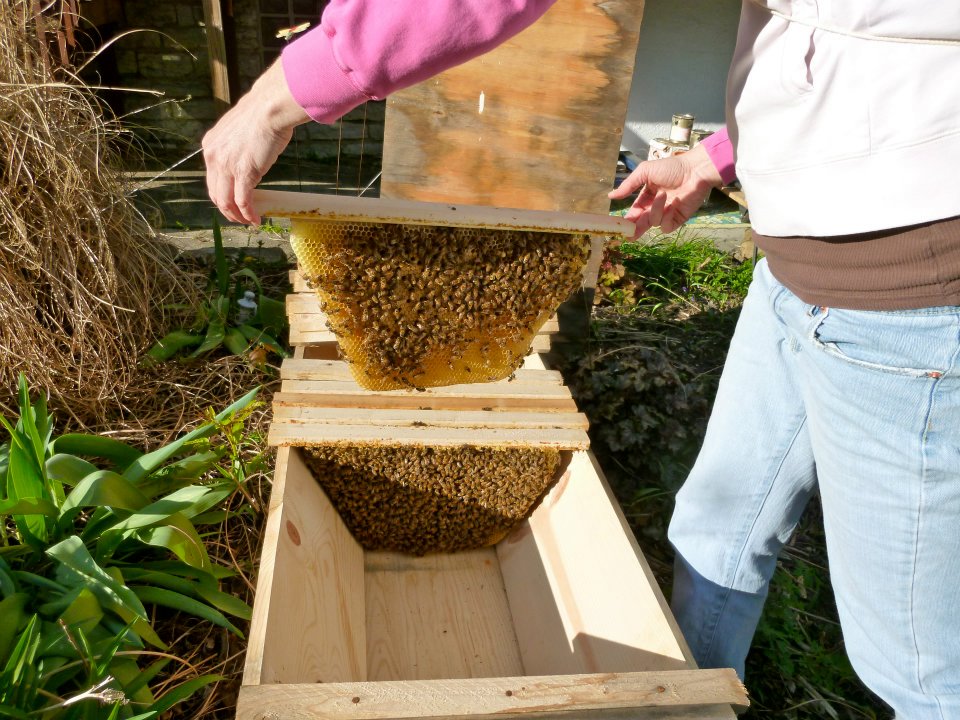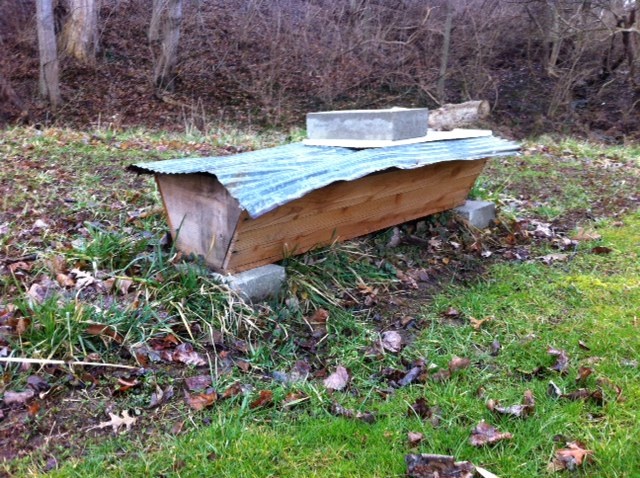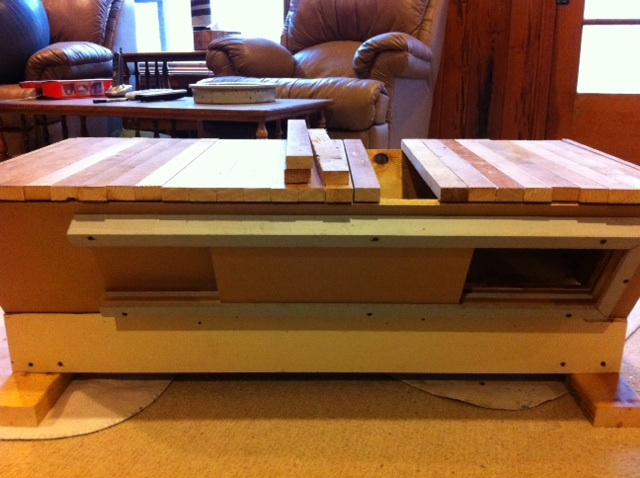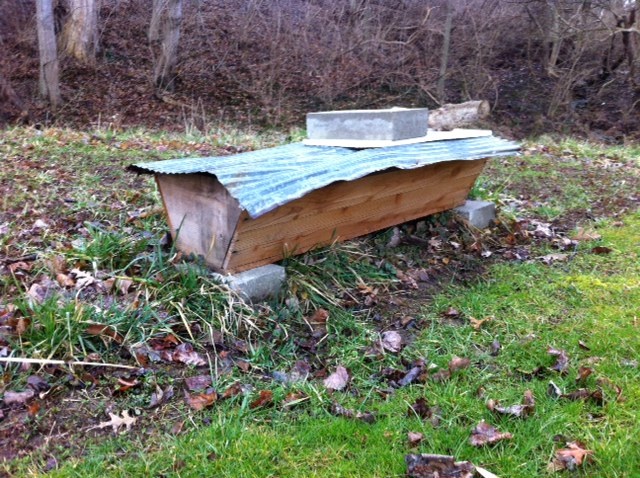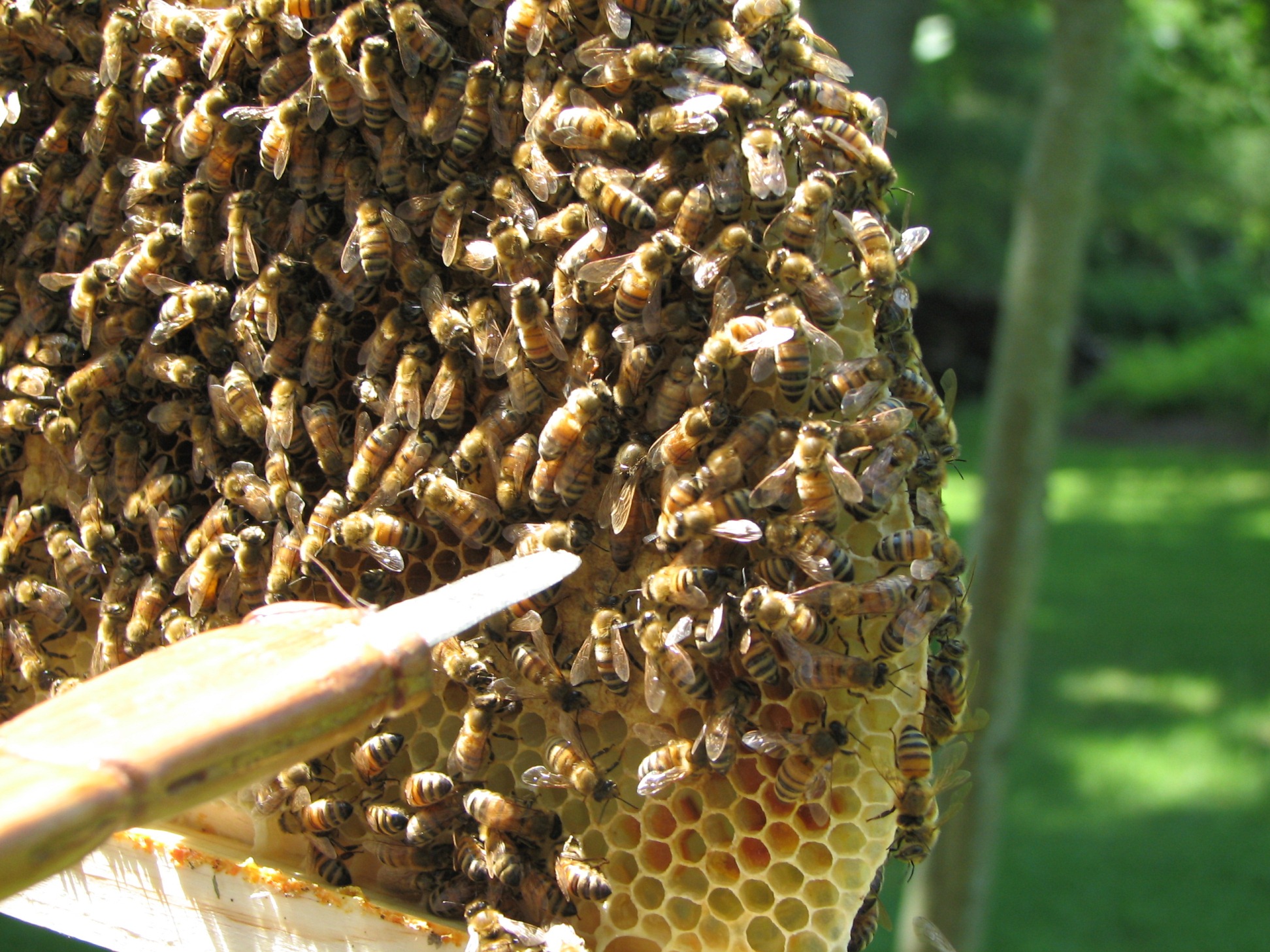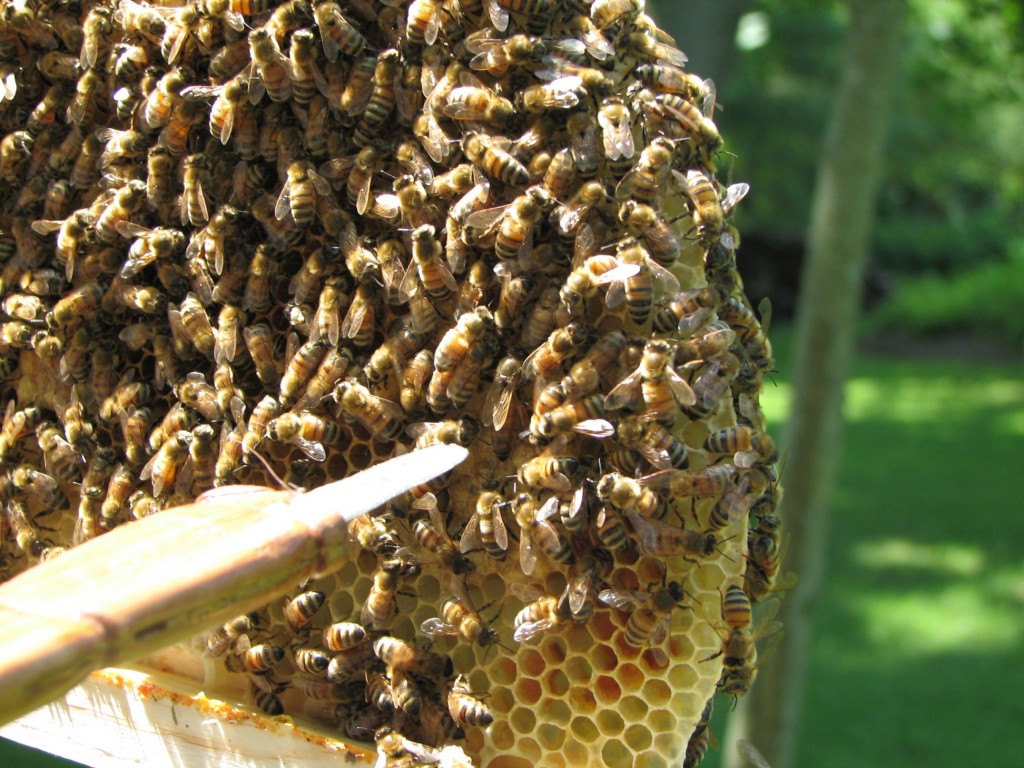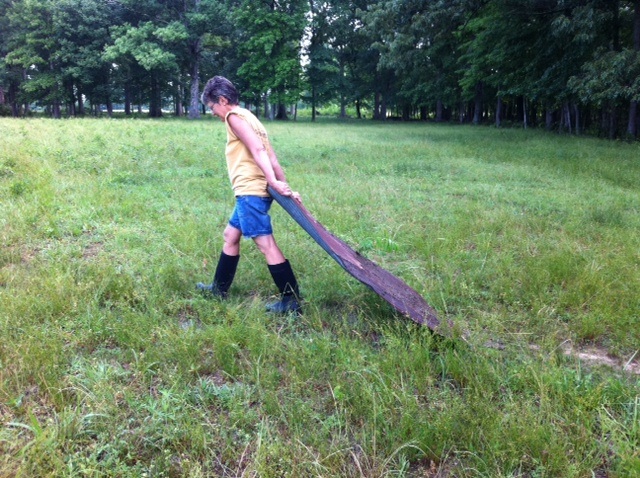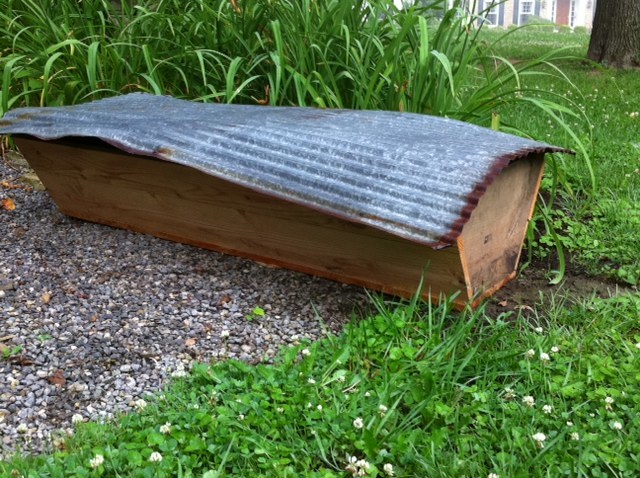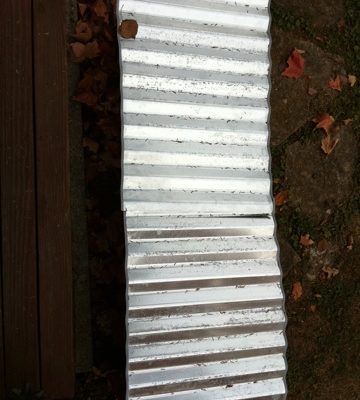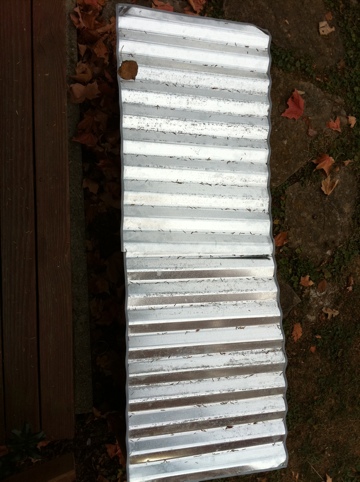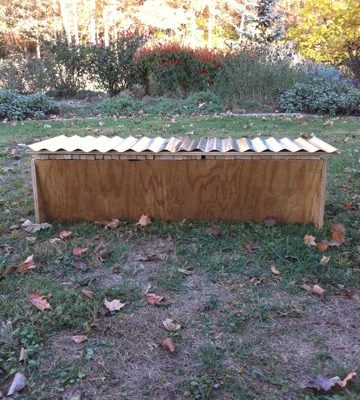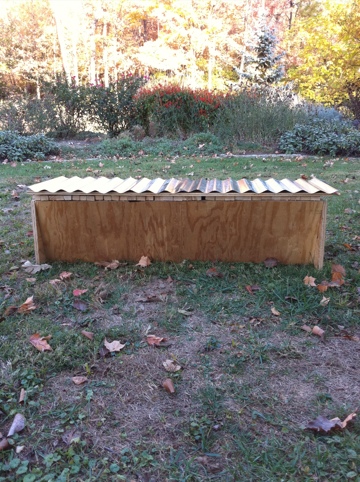I like to construct my top-bar hives from rough-cut cedar fencing. The bees like the smell of the cedar—even as I construct, the bees investigate—and they like to hang out on the rough-cut grain. And, unlike pine, the cedar ages so gracefully. Pine gets sort of dull as it ages whereas cedar patinas.
However, this year, a number of my top-bar hives constructed with cedar fencing toppled over in high winds. That is definitely not good. In a few cases, I’ve gone to some elaborate means to keep the hives upright. But I still worry about them when the winds pick up…so, I’ve got to figure out a way to reduce the likelihood that the hives will tip over.
I’ve tried anchoring some of the hives with bungee cords and stakes. Others I’ve weighed down with a million pounds of rocks. But I’ve got to find a better, more aesthetically appealing way (you know, Reader, although my hives are simple, they’re also beautiful to my eye…and that’s very important to me. I need things to look good).
The hives I built years ago of pine don’t topple…probably because those hives are heavier. I think the lightness of the cedar fencing is at the root of the toppling problem…so, when I had some free time yesterday afternoon, I headed to Home Depot where I found heavier cedar. The new cedar lumber is gorgeous…it’s rough cut on one side and smooth on the other. It smells awesome. It’s thicker and heavier than the fencing, which will provide the bees with more insulation. Yes, it’s twice as expensive (still not enough to freak out over), but I think it’s worth it for the aesthetics, for the security it gives the bees, and for my own peace of mind.

